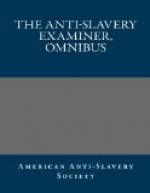RELIGION.
There are three denominations of Christians in Antigua: the Established Church; the Moravians, and Wesleyans. The Moravians number fifteen thousand—almost exclusively negroes. The Wesleyans embrace three thousand members, and about as many more attendants. Of the three thousand members, says a Wesleyan missionary, “not fifty are whites—a larger number are colored; but the greater part black.” “The attendance of the negro population at the churches and chapels,” (of the established order,) says the Rector of St. John’s, “amounts to four thousand six hundred and thirty-six.” The whole number of blacks receiving religious instruction from these Christian bodies, making allowance for the proportion of white and colored included in the three thousand Wesleyans, is about twenty-two thousand—leaving a population of eight thousand negroes in Antigua who are unsupplied with religious instruction.
The Established Church has six parish churches, as many “chapels of ease,” and nine clergymen. The Moravians have five settlements and thirteen missionaries. The Wesleyans have seven chapels, with as many more small preaching places on estates, and twelve ministers; half of whom are itinerant missionaries, and the other half, local preachers, employed as planters, or in mercantile, and other pursuits, and preaching only occasionally. From the limited number of chapels and missionaries, it may be inferred that only a portion of the twenty-two thousand can enjoy stated weekly instruction. The superintendent of the Moravian mission stated that their chapels could not accommodate more than one third of their members.
Each of the denominations complains of the lack of men and houses. The Wesleyans are now building a large chapel in St. John’s. It will accommodate two thousand persons. “Besides free sittings, there will be nearly two hundred pews, every one of which is now in demand.”
However much disposed the churches of different denominations might have been during slavery to maintain a strict discipline, they found it exceedingly difficult to do so. It seems impossible to elevate a body of slaves, remaining such, to honesty and purity. The reekings of slavery will almost inevitably taint the institutions of religion, and degrade the standard of piety. Accordingly the ministers of every denomination in Antigua, feel that in the abolition of slavery their greatest enemy has been vanquished, and they now evince a determination to assume higher ground than they ever aspired to during the reign of slavery. The motto of all creeds is, “We expect great things of freemen.” A report which we obtained from the Wesleyan brethren, states, “Our own brethren preach almost daily.” “We think the negroes are uncommonly punctual and regular in their attendance upon divine worship, particularly on the Sabbath.” “They always show a readiness to contribute to the support of the gospel.




